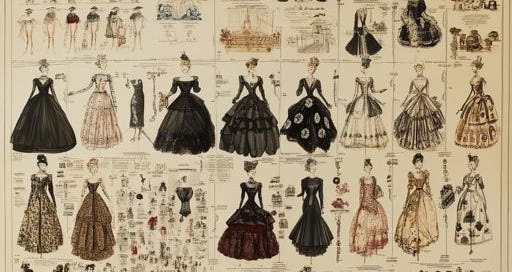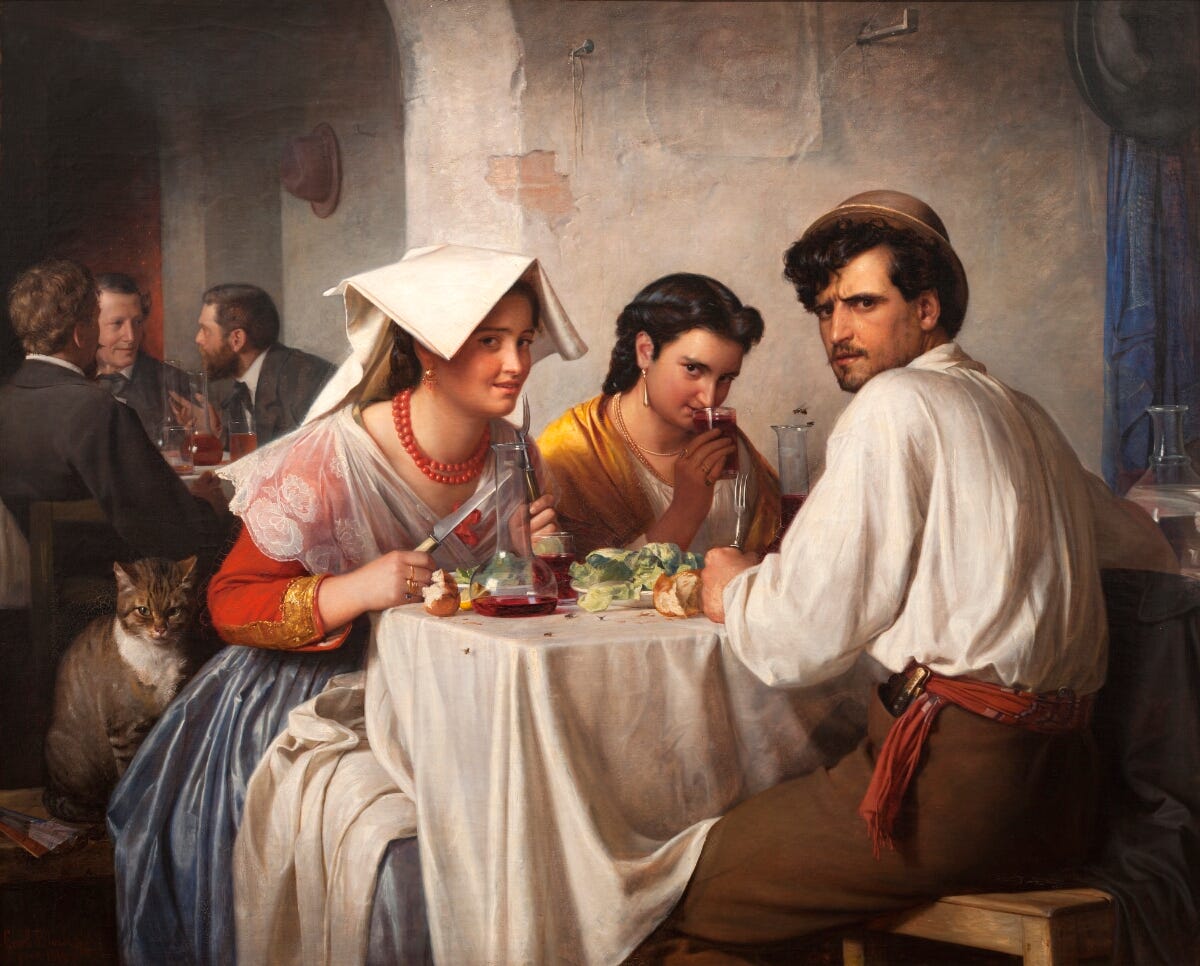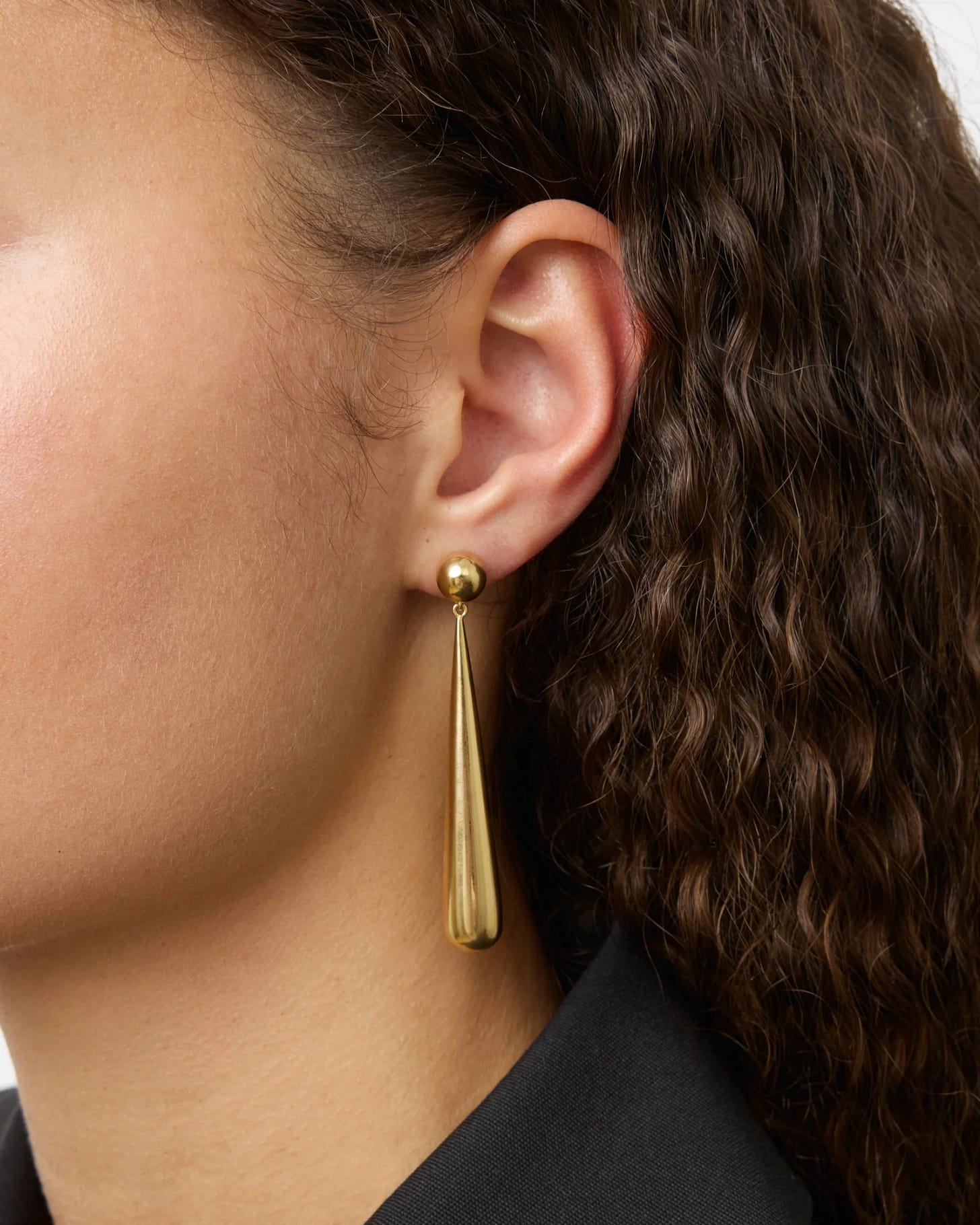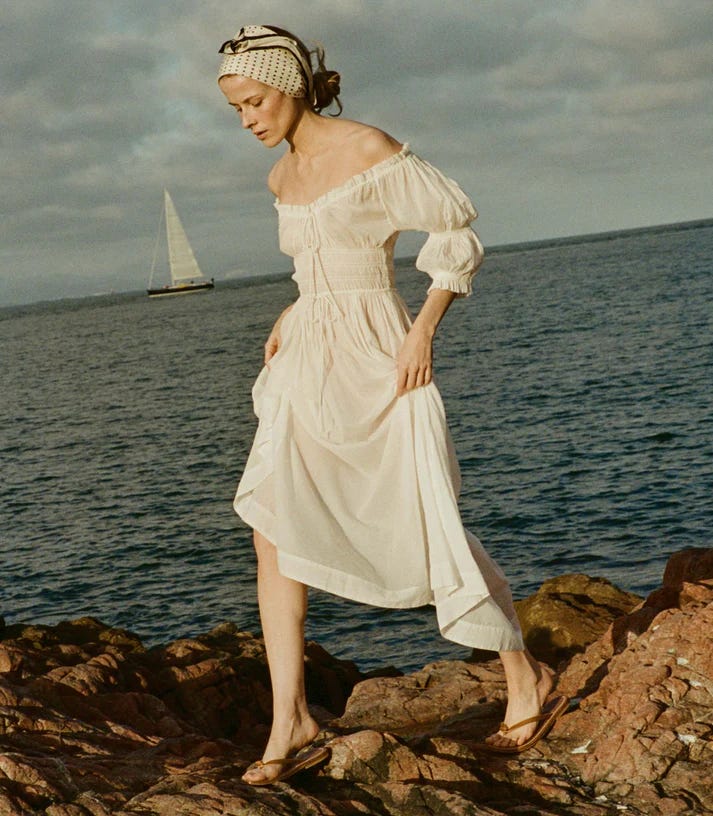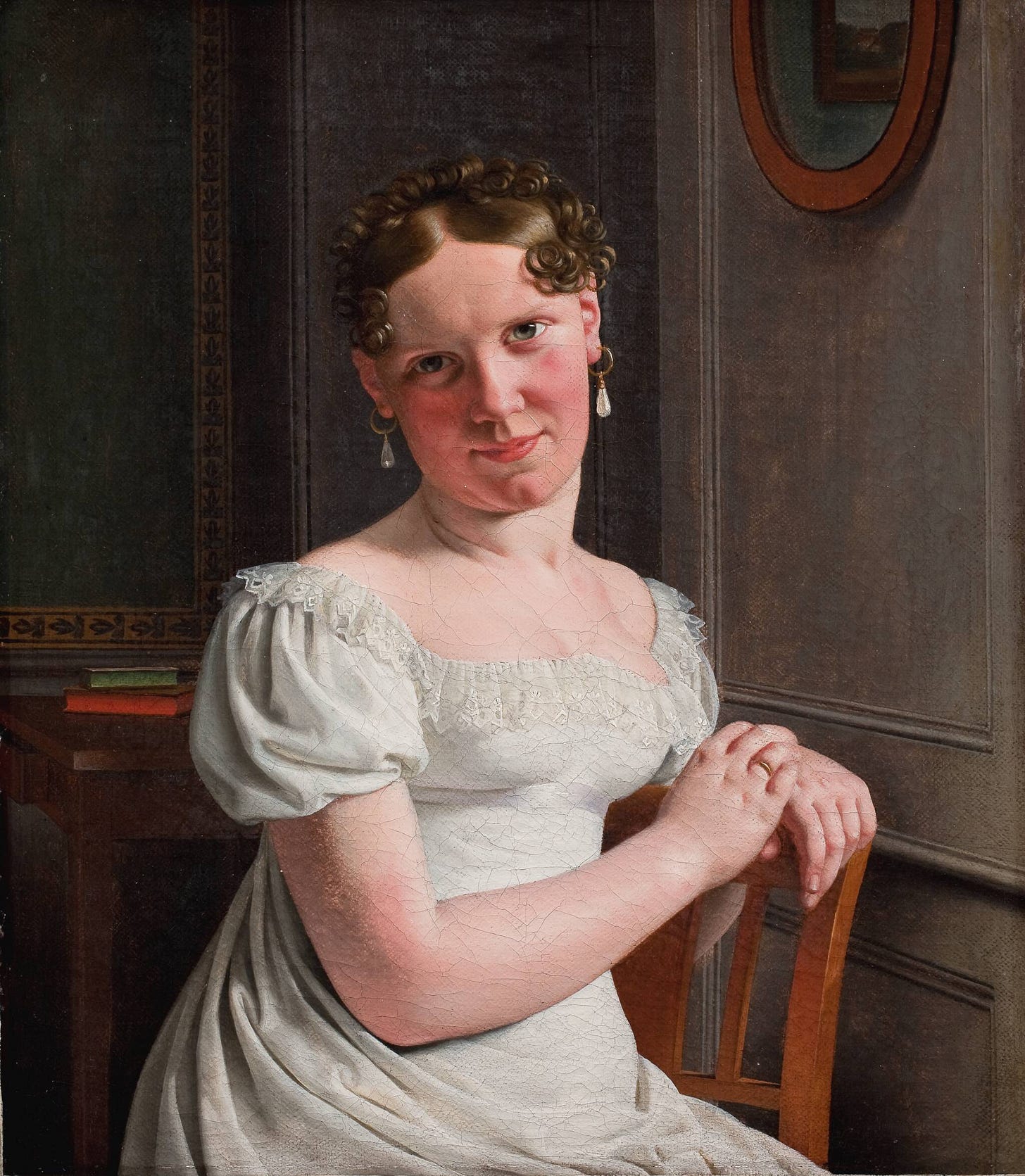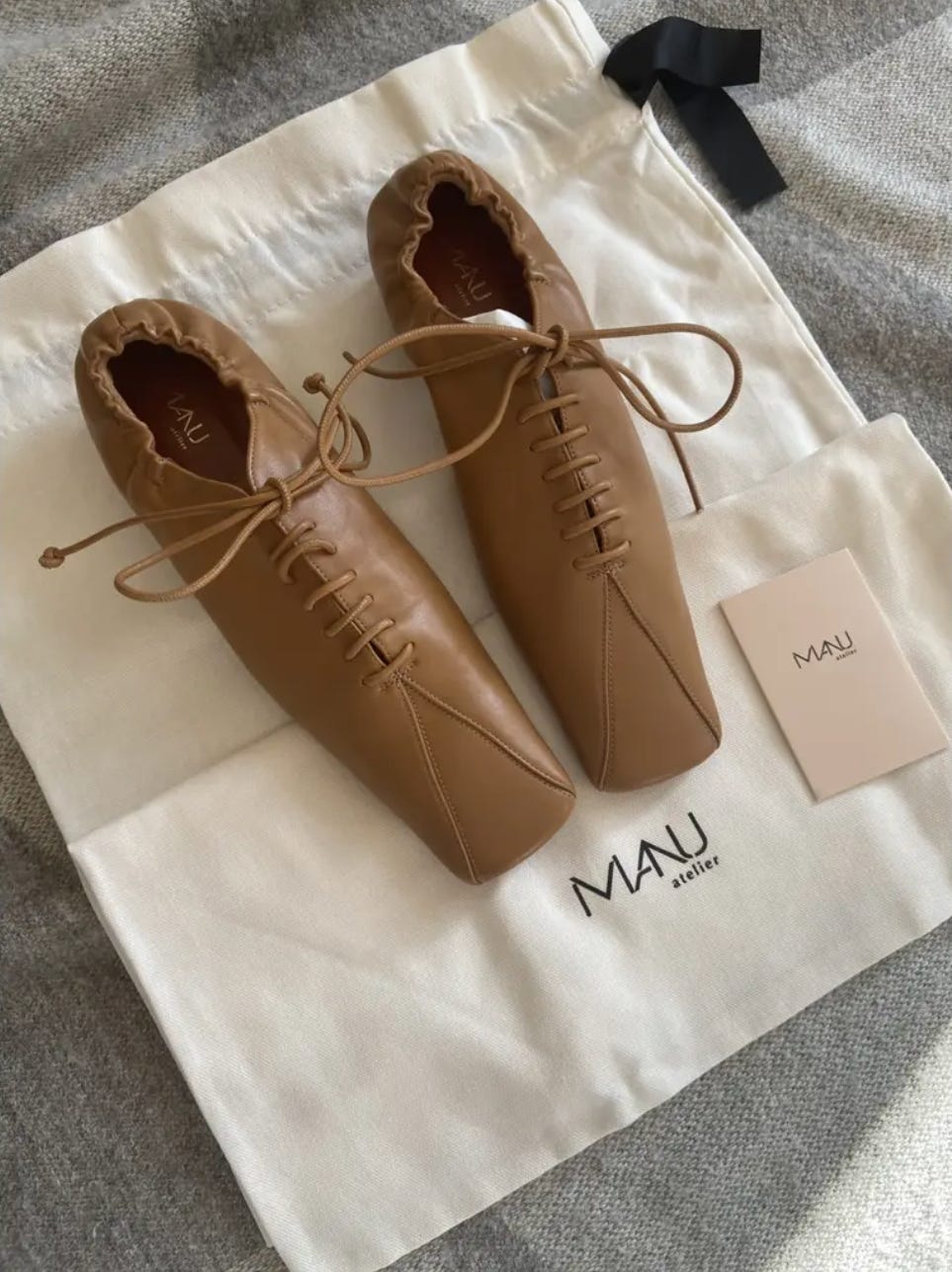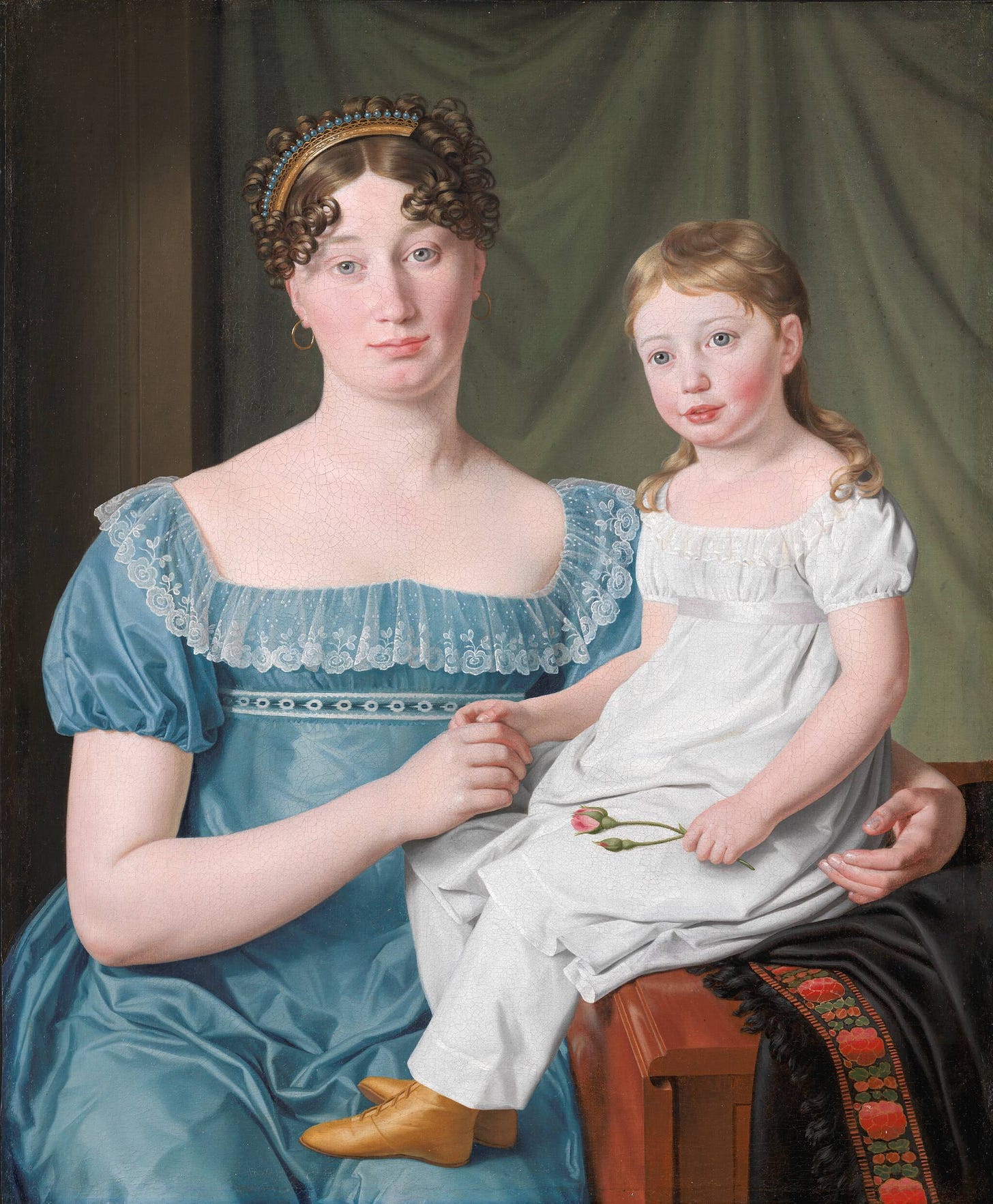There’s an irony in how often fashion, celebrated as the epitome of the new, is deeply haunted by the past. We speak of trends as fleeting, ephemera carried on the winds of innovation and taste. And yet, time and again, whether walking through cities, scrolling through editorials, or browsing the racks of so-called contemporary fashion, I’m struck by a familiar sensation - not of novelty, but of return.
Fashion theorists like Elizabeth Wilson suggest that clothing both reflects and refracts the social anxieties of its era, while Caroline Evans describes ‘fashion’s time’ as nonlinear, marked by repetition, citation, and temporal disjunction.
We do not simply dress for the present moment; we dress through it. In this sense, every outfit is a composite. Not just of materials, but of memories. Sometimes those memories surface vividly. Not as abstractions, but as visual rhymes: a hemline echoing another century, a pair of earrings that bridge generations. These moments are not accidental. They are emotional flashpoints; what Roland Barthes called the punctum, the detail that wounds, that pierces through time and speaks directly to the viewer.
Fashion’s memory and the myth of the new
Before I dive into the nitty gritty, I want to tell you about why I’m writing this. You see, we often speak of fashion as the domain of the new: the next trend, the latest drop, the freshest look. But I’ve noticed that what’s marketed as cutting-edge reveals itself to be hauntingly familiar. As someone who has studied the evolution of Western women’s dress over the past two centuries, I have come to see modern fashion not as a break from history, but as its echo. What we wear today is stitched with references to what has been, and perhaps always will be.
While ‘new in’ sections promise novelty, the garments themselves often feel like déjà vu: a sleeve remembered, a waistline returned, a silhouette that carries ghosts. If this feels uncanny, it’s because fashion doesn’t forget. It loops, it lingers, and it speaks, not just of trends, but of time.
These thoughts have lingered, wandering every corner of my mind, especially over the past weeks, after a recent visit to the Statens Museum for Kunst (SMK) in Copenhagen. While tip-toeing through the vast marble halls, I locked eyes with several women of the past, whose existence and garments, painted dutifully by the hands of masters, transcend the construct of time as we often know it. Their garments, so familiar, echo the past, but also represent the present, which reminded me: fashion keeps repeating itself and we keep forgetting.
Case Study 1 – Carl Bloch’s ‘In a Roman Osteria’ vs LIÉ Studios' Louise Earrings
In a room laced with 19th-century paintings, I was stopped not by a face, but by a glint of gold. In Carl Bloch’s In a Roman Osteria, painting in 1866, a woman turns her head ever so slightly, her expression pensive. But what caught me were her earrings: long, gold, drop-shaped: simple, sculptural, and startlingly contemporary.
They looked almost identical to a pair I had seen just days earlier in a Copenhagen storefront. The Louise Earrings by LIÉ Studios, a Danish accessories brand founded in 2021 by twin sisters Amalie and Cecilie Moosgaard, have become a staple of Scandinavian minimalism: bold, understated, and widely seen as fresh and forward-thinking. These same earrings have been circulating heavily across Instagram feeds, featured by influencers and fashion publications alike. Their form, a linked silhouette with rounded drops, feels distinctly of-the-moment. And yet, here they were, hanging from the ears of a 19th-century Roman woman.
This was my punctum. A detail that broke chronology. What LIÉ Studios presents as new is, in fact, a revival, not in a derivative sense, but in the deepest sense of continuity. As Caroline Evans might argue, this is not repetition, but citation. The past has been summoned and recontextualised.
Hebdige’s notion of “semiotic guerrilla warfare” also applies here. The long drop earring, once a symbol of wealth and leisure, now functions in a different cultural grammar. Worn today, they’re not aristocratic but architectural. They speak not of class but of curation, of taste. In their modern setting, they are not relics, they are reframed.
This isn’t a critique of the brand. Actually, on the contrary, I own a pair of their Ingrid earrings and admire their visual language. But the Louise Earrings are not entirely new. They are a return. A reminder that design is rarely invented whole: it evolves, accumulates, and repeats.
Case Study 2 – C.W. Eckersberg’s ‘Julie Eckersberg, née Juel, the Artist’s Second Wife’ vs. Dôen’s Ischia Dress
If the first case study hinged on the sudden shock of recognition, this one arrived more slowly.
Not every detail of the garments I’ll discuss is identical, but the resemblance is striking. Not just in form, but in feeling. This is a silhouette that has threaded through centuries of women’s fashion, changing not just in use, but in meaning.
While browsing Dôen’s summer collection - the Californian womenswear brand founded in 2016 by sisters Margaret and Katherine Kleveland - I paused on the Ischia Dress: a light cotton gown with a square neckline, gathered empire waist, and gently puffed sleeves. It reads as bucolic and contemporary, the kind of dress meant to be photographed in soft morning light, barefoot in a garden, or walking a beach that still remembers fog. But what it truly reminded me of wasn’t a setting, but a woman: Julie Eckersberg, as painted by her husband, C.W. Eckersberg, in 1817.
In that portrait, Julie sits in a similarly constructed dress: high-waisted, demurely detailed, soft but architectural. It is not just the silhouette, but the attitude of the garment that carries through; composed, quiet, almost pastoral in its restraint. The connection is not direct, not a citation, but more of a reverberation.
Unlike the assertive shimmer of LIÉ’s earrings, which jolted past and present into confrontation, the Ischia dress and Julie’s portrait engage in a more elusive kind of mimicry. They mirror not so much each other as a shared sensibility, an ideal of femininity expressed through cloth. Where the modern dress speaks of ease and freedom, the portrait’s gown spoke of decorum and domestic virtue. And yet the shape - that gentle rise just under the bust, the exposed collarbone framed by delicate seams - has remained uncannily persistent.
The empire waist itself has a curious history. Rising to prominence around the turn of the 19th century, it echoed the classical lines of ancient Greece and Rome, aligning with Enlightenment ideals about reason, virtue, and natural beauty. Freed from the rigid corsetry of earlier decades, it suggested simplicity and moral clarity, a dress fit for Rousseau’s heroine. Later, in the Victorian imagination, it was recast into something more maternal and pious. In the 1960s, it returned again, this time attached to countercultural romanticism. And today, on the Instagram feeds that showcase Dôen’s world - soft hair, sun-flared film, wildflowers in jars - it signals something else: intentional slowness, artisanal taste, curated softness. The line is the same; the meanings multiply.
So when we see dresses like the Ischia in the “new in” section, they aren’t quite new at all. They are part of fashion’s cycle. This is where fashion’s memory becomes more than just aesthetic. It becomes ideological.
Where Roland Barthes gave us the punctum, the detail which pierces through time, Walter Benjamin offered another idea: the dialectical image, a flash in which past and present collide, neither one erasing the other. That’s what the Ischia dress felt like: not a throwback, but a flashpoint.
Dôen’s brand language leans heavily into storytelling, the gentle domesticity, the sun-drenched ease, but when it comes down to it, they rarely name its sources. That vagueness is part of why, despite the repetition of fashion throughout the ages, we keep forgetting. The dresses in question are not replicas, but vessels. They carry memory. In Julie’s portrait, you see the origin point, or at least one of them. In the Ischia dress, you see the remix.
This is not just a return, it’s a quiet reanimation. It’s less about remembering what fashion was, and more about discovering what it continues to carry. After all, fashion keeps repeating itself, and we keep forgetting.
Case study 3 – C.W. Eckersberg’s ‘Portrait of Sophie Hedvig Løvenskoid and her three-year old daughter’ vs. Manu Atelier’s Lace-up Duck Loafers
Some historical echoes arrive not as ornament, but as infrastructure. I found one such echo while scrolling through Vestiaire Collective, one of fashion’s most influential resale platforms, founded in Paris, a platform built on the idea that a garment’s life doesn’t end at the boutique, but can and should live on.
There, among silk blouses and statement bags, I paused on a pair of lace-up duck loafers by Manu Atelier: quietly angular, structured yet soft, with a square toe and visible seaming that recalled the careful geometry of another era. They felt contemporary, but not new. Familiar, but not from my own memory.
The link surfaced later, from the recesses of visual memory when, during my gallery visit to the SMK, I stumbled upon Portrait of Sophie Hedvig Løvenskiold and Her Three-Year-Old Daughter, painted by C.W. Eckersberg in 1827. Sophie sits composed in a high-waisted gown, her child seated beside her. But what draws the eye downward are their shoes: lace-up leather flats, squared at the toe, practical and restrained, saturated in a soft golden hue. They speak of domestic life. Contained, but not inert, and of mobility. These were shoes not entirely for show, but for walking, for going somewhere.
Historically, the lace-up low shoe (whether called a derby, oxford, or half-boot) gained traction in the early 19th century, especially as women’s roles shifted from private to increasingly public. As European cities modernised, women walked more, shopped more, moved more, and their footwear evolved accordingly. Gone were the flimsy satin slippers of the ancien régime and in came sturdy leather, modest heels, and laces that suggested security over seduction. The lace-up shoe marked a subtle but significant transition: from passive display to purposeful presence.
Fast-forward to the duck loafer by Manu Atelier, a brand founded in 2014, not in Paris but in Istanbul by sisters Beste and Merve Manastır. Their label is steeped in Turkish artisanal leatherwork, drawing from centuries of craft tradition. And yet its minimal, structural aesthetic resonates unmistakably with French and Northern European sensibilities. That you might find these shoes on a French resale site feels apt, a convergence of Ottoman technique, Parisian fashion infrastructure, and Danish portraiture.
In that convergence, a new story forms. The Manu loafers, like Sophie’s shoes, aren’t flashy; they’re deliberate. They suggest decisiveness, intelligence, quiet assertion. Today, they might be worn with oversized tailoring or a silk midi skirt, styled to reflect modern taste. But their DNA - the low profile, the laces, the modest structure - reference yesteryear, when women were first stepping, both literally and figuratively, into visibility.
In Eckersberg’s painting, the shoes are a whisper of self-possession. A mother and daughter, both grounded. Both dressed not just for the sitter’s chair, but for life beyond the frame. And so too with Manu Atelier’s loafers. Functional, elegant, insistent in their simplicity; they carry memory not as nostalgia, but as architecture.
Sometimes fashion’s memory isn’t purely visual. It’s tactile: the sensation of lacing a shoe, the feel of structured leather, the quiet shift from ornament to necessity. These are not just objects of design, but fragments of continuity, reminders of a style we think we've never seen before, but somehow already know. Fashion keeps repeating itself, and with its fast-moving industry, the constant sales and re-sales, it can be easy to forget.
Conclusion: A quiet time travel
As I’ve tried to show through these three case studies, fashion is more than just a cycle, it’s layers of history built over time. The same shapes return, yet each time with new stories stitched into their seams. I could write for hours, days, even weeks, tracing further echoes and parallels, and perhaps I will. But for now, I hope these three examples have lingered with you.
Recognising these recurrences isn’t to dismiss contemporary fashion as unoriginal. Rather, it reveals fashion’s unique ability to converse with the past. To revisit, reinterpret, and quietly inform what comes next.
And isn’t it bizarre that these three contemporary reinterpretations are all born from brands founded by sisters? Not entirely related to the argument in question, but an interesting coincidence nonetheless.
But let’s return again to the Copenhagen gallery. I felt dislodged in time, not because the art was old, but because it wasn’t. In hems, earrings, fabrics, in a weird folding of time, I saw us, today. Puffed sleeves once worn by aristocrats now hang in high-street windows, reclaimed as symbols of strength. Corsets, once tools of restriction, have been reimagined as declarations of autonomy. These garments don’t forget their history, they carry it forward.
So while we often like to think we dress for the present, what we wear is often a form of time travel, a conversation with ancestors whose silhouettes we echo, whose details we inherit. We see and wear items that feel new to us, but in a broader context, they are not new at all. In a world obsessed with what’s next, perhaps fashion’s greatest gift is to remember. After all, fashion keeps repeating itself, and we keep forgetting.
Calling something ‘new’ in fashion can often mislead. Not through lack of creativity, but because so much reinvention wears the guise of invention. This detachment from history may explain why the stories behind our clothes are so often left untold…but that’s a conversation for another time.


